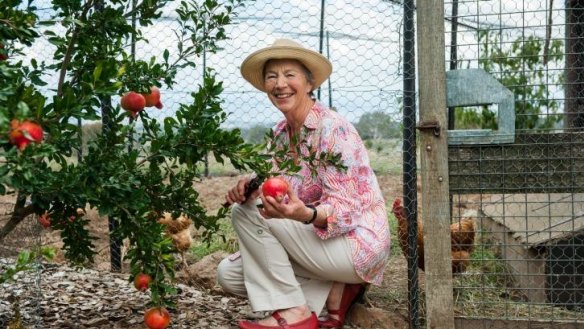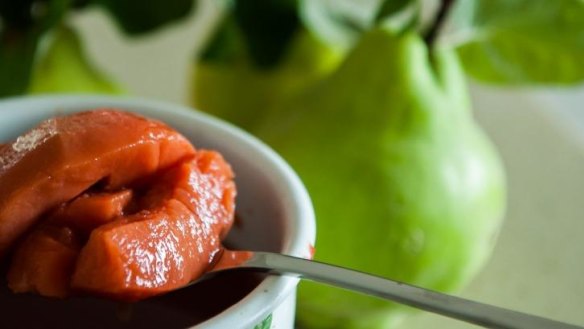Kitchen Garden: Inside Byll and Felicite Swan's garden at Murrumbateman

Thirty years ago Byll and Felicite Swan moved from their house and garden in suburban Farrer to take up farming on a property 40km from Canberra at Murrumbateman. There are magnificent 360-degree views from the hilltop site that has great dramatic outcrops of granite but pockets of good soil.
The Swans have another farm at Bookham where they raise sheep and Byll supplies the garden at Murrumbateman with well-rotted manure from under the shearing shed and hay from the paddocks. Felicite uses this to enrich her large vegetable garden with its raised beds filled with sprawling Lebanese zucchini, Bunching Broccoli planted from seedlings purchased at Yass Nursery, and rows of Savoy and red cabbage raised from four-year-old seed that she picked and dried.
The parsnip crop is not as thick as expected as there were 500 seeds in the two packets sown but only about 30 plants have resulted. The culprits could be a range of different lizards who sunbake in the area or a number of bounding rabbits that greeted and farewelled me from the property.

There is a special asparagus bed, rows of kale and beetroot and a vase area of rambling pumpkin vines hiding large butternuts. Four Gedye compost bins also provide nutrients for the garden. Felicite says the trick to producing good compost is frequent turning of "a lasagne of ingredients".
Four Isa brown chooks have a large run and roost enclosed by a wire fence and along one side is a row of pomegranate shrubs of the variety 'Wonderful'. Further down the slope, beside a tennis court, is another row of pomegranates planted three years ago. They are all laden with beautiful red fruit and Felicite explains that they should be picked when there is a tiny crack in the skin and the fruit has almost split open.
There are two apple trees with three-way variety grafts and the Pink Lady apples have both ripe and fresh green fruit on the tree. A self-pollinating almond tree planted in 2008 has produced a crop that filled a large bowl during harvest. This was the first time I had been in a home garden where almonds were grown with success.
In a sunny corner beside the house is a grove of citrus, including a blood orange, a lemonade tree that is laden with green fruit, a lime and a ruby grapefruit. Tucked into a warm corner is a large pot filled with turmeric, which has been raised from a rhizome given to Felicite by a Canberra friend nine months ago. A spaghetti marrow sits on a bench beside the front door opposite a row of brown, elastic-sided boots.
Carefully netted quince trees are weighed down with beautiful big and shapely fruit. Felicite says if the seeds in a quince are brown you know it is ripe, even if the skin is still greenish. A bowl of mature quinces will fill a room with their fragrance and remove any unpleasant smells.
Felicite Swan is a marvellous and keen cook. On her kitchen bench is a huge platter covered with varieties of late-harvest tomatoes of all colours and sizes and Black Supreme eggplants, which were the best and most prolific vegetable in the garden this season. The kitchen cupboard is filled with jars of apricot and fig jam, and pickled artichokes which are picked young.
A pomegranate cake was being baked during our visit while Heston Blumenthal's Eccles cakes filled with currants were served warm for afternoon tea with potted cheese. There was a platter of pomegranate Turkish delight based on a recipe in Creating Gourmet Gifts by Barbara Beckett but best of all was the stewed quinces made to a recipe from The Practical Australian Cookery by Miss Amie M. Munro, a little coverless book that belonged to Felicite's grandmother.
STEWED QUINCES
six large quinces
1 litre water
230g sugar
Wash the quinces, peel and remove the cores, stew the cores very gently in the water for one hour; then strain, add the sugar and when boiling add the quinces cut in quarters, and cook very slowly for two hours, when they should be a rich colour. Do not allow to boil.
Susan Parsons is a Canberra writer